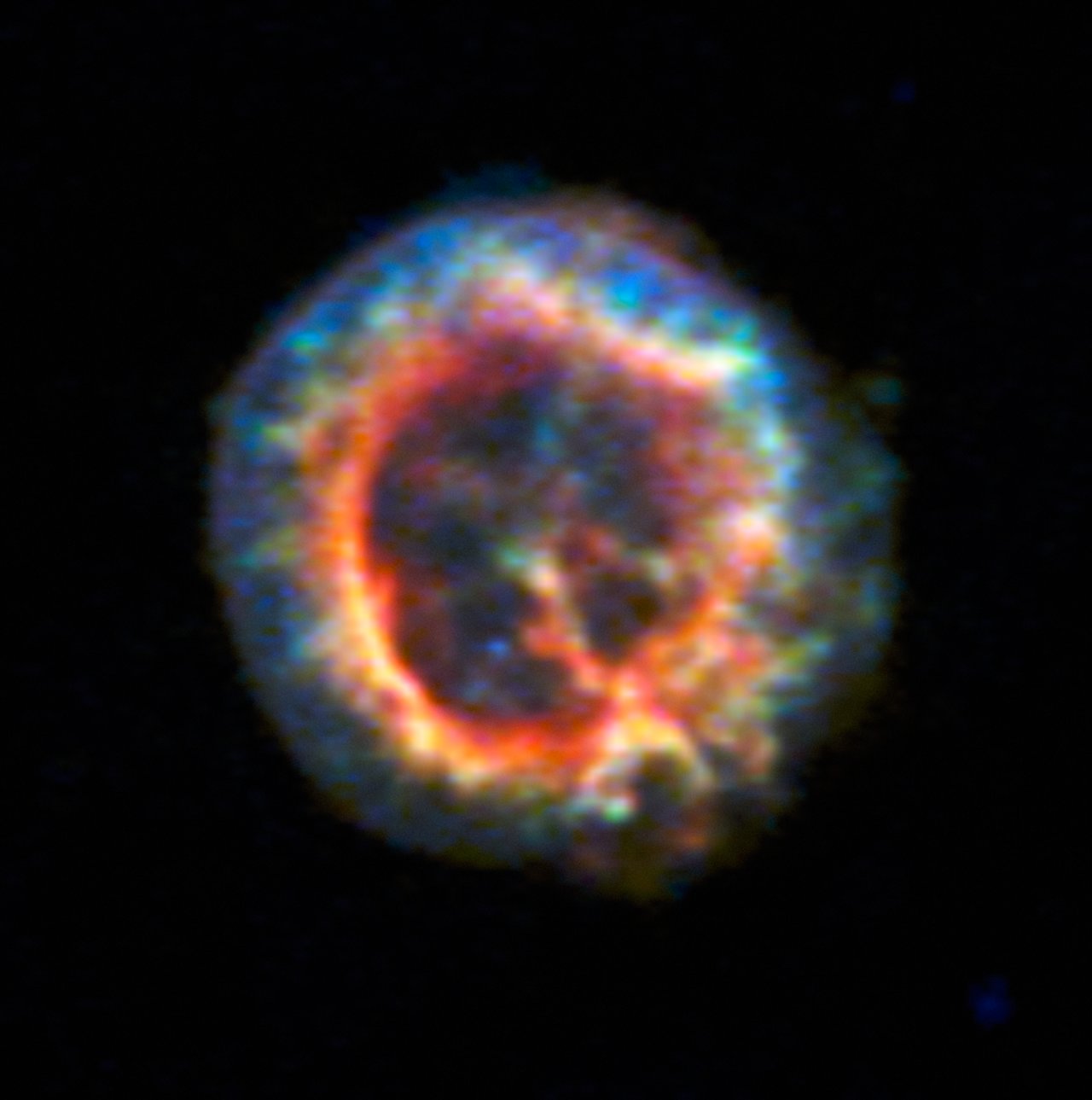There’s something hiding in the centre of the red ring in this colourful circle of gas and dust. But it’s only hiding if you don’t know how to look for it. In fact, at the centre if this image is a tiny neutron star that is spewing out X-rays.
The remnants of a supernova explosion in a neighbouring galaxy. Image: ESO/NASA, ESA and the Hubble Heritage Team (STScI/AURA)/F. Vogt et al.
You’re looking at 1E 0102.2-7219, the remnants of a supernova in one our Milky Way’s closest neighbours, the Small Magellanic Cloud dwarf galaxy. This supernova remnant is especially well-studied, but that hasn’t stopped astronomers from continuing to find new surprises, such as the neutron star at its centre.
“It shows how new instrumentation can really open up new avenues of discovery,” study author Elizabeth Bartlett from the European Southern Observatory told Gizmodo.
Neutron stars are tiny, super-dense objects that emit X-rays. They can pack the mass of our Sun and more into ball less than 32km across. They are so dense, in fact, that the protons and electrons of their atoms are smashed together, forming neutrons – hence the name.
If you’ve been reading Gizmodo recently, you’ve probably already figured out that, no, 1E 0102.2-7219 would not look that colourful if you pointed your own telescope at it. Astronomers have combined data from several telescopes. They have chosen to represent the Chandra X-ray Observatory data in purple and blue, but the more interesting stuff is the green and red ring.
The ring comes from MUSE instrument attached to the Very Large Telescope, and it’s caused by light emitted from oxygen and neon atoms. That light really would look green and red to your eyes if the supernova remnant were close by. But this ring, along with the X-ray dot in the centre, demonstrates the presence of a neutron star just 8.7km in diameter.
Given the 200,000 light-year distance between Earth and the Small Magellanic Cloud, it’s one of the furthest such sources ever spotted.
The Chandra X-ray Observatory often looks at this celestial object in order to check its performance, the way you might print a test sheet after repairing your printer. Other astronomers have looked for this X-ray source but thought little of it, just labelling it p1 and leaving it up to later study – it wasn’t clear whether the X-rays were coming from inside or behind the supernova remnant. You can see the source as an unassuming blue speck just below and to the left of the ring’s centre in the Chandra data:

Chandra image of the X-ray source (the central blue speck). Image: ESO/NASA
On top of that, the discovery might be game changing – the authors propose the location as where the supernova began, according to the paper published in Nature Astronomy. Or maybe the compact star was there before the supernova occurred – we don’t know yet.
Bartlett just thought it was cool that this thing was hiding in such a well-known source.
“The point I’m trying to make is that we literally look at this source ALL the time but we STILL don’t know everything about it,” said Bartlett. “It’s been hiding in plain sight!”
